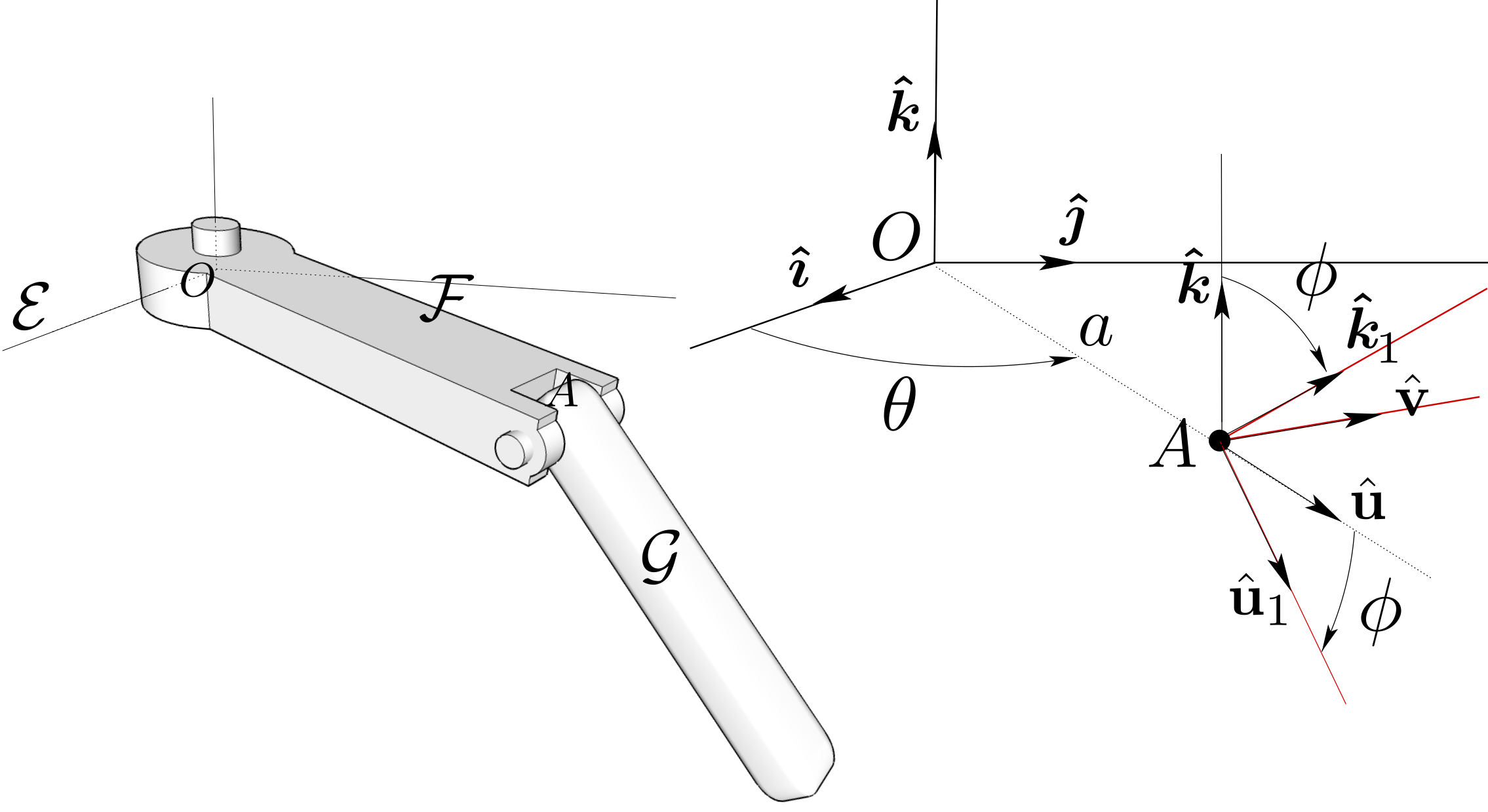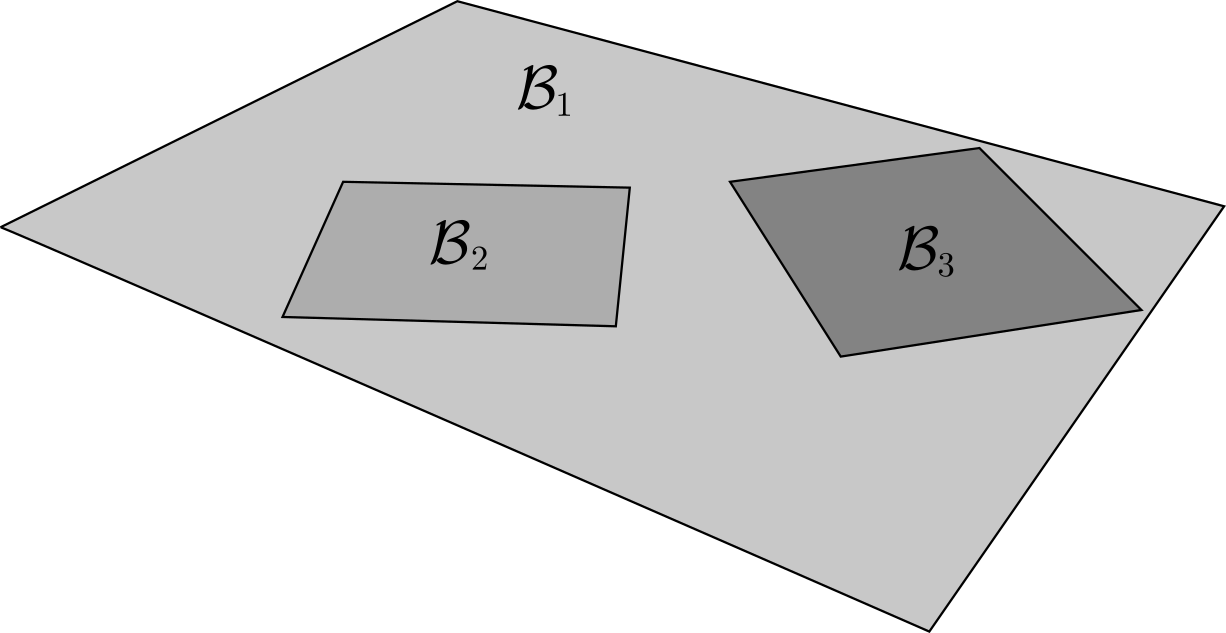1.
A rigid body \(\cB (B, \bhb_1, \bhb_2, \bhb_3)\) is in motion relative to referential \(\cA\text{.}\) At a particular time, its kinematic screw can be written in the following form
\begin{equation*}
\left\{ \cV _{\cB/ \cA} \right\} =
\left\{
\begin{array}{c}
\bhb_1 + \om \bhb_2 \\
\bze
\end{array}
\right\}_P
+
\left\{
\begin{array}{c}
\bhb_1 +\Om \bhb_2 \\
\bze
\end{array}
\right\}_Q
\end{equation*}
where points \(P\) and \(Q\) are defined by \(\br_{BP} = \bhb_3\) and \(\br_{BQ} =
-\bhb_3\) (\(\om\) and \(\Om\) are two real parameters).
Find the instantaneous screw axis of \(\cB\) relative to \(\cA\) at this instant. Can body \(\cB\) be in instantaneous rotation?


